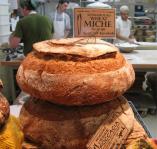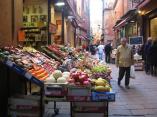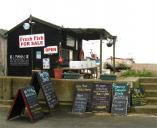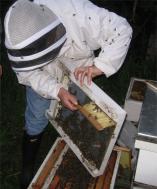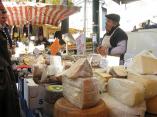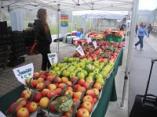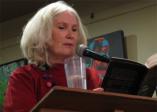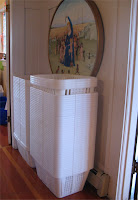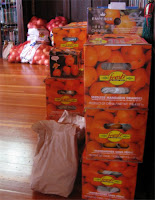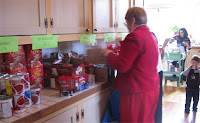We of the high minds will inevitably run into problems if we try to follow our principles to the letter. If we are pursuing sustainability in all realms – food, finance, environment – we will find along the way some aspect of our lives that does not fit completely, that cannot be perfectly adapted. We are human, living imperfect lives in an imperfect world.
One such imperfection is pets; in my case, elderly dog Anton. The higher principles under which he came to join my household are that he was abandoned – his owner unable to look after him – at too great an age (aged 9, five years ago) to be adoptable. His temperament is not one that allows him to live happily with other dogs, and he is potentially dangerously grumpy if manhandled, which would probably exclude most households with children. So had he ended up in a shelter he’d probably not have made it out the door to a new home. And now we are 14, the complaints and considerable expenses of age are descending with some force.
A recent article in the Calgary Herald points out the large ecological footprint dog ownership leaves, which likens the overall burden to that of a carelessly driven gas-guzzler. The concerns are many: food (largely meat and cereal, usually packaged in plastic bags or plastic-lined tins); poo bags (any old plastic bag has been the norm till recently); water and food dishes (metal and plastic); pet toys (usually plastic, often very cheap and breakable); mileage (driving to walks, grooming, obedience training or veterinary appointments); leashes and collars (a lot of plastics involved); dog houses (lots of plastics unless you build your own); beds (very often man-made fibres covering pillows made of plastic foam or styrofoam beads); veteriarian and grooming supplies (plastic bottles of pharmaceuticals and grooming supplies, pesticides to treat external parasites, plastic syringes, chew collars, combs, brushes, hairdryers, toothbrushes etc); and a whole other world of expenses if you get into dog trials or invest in extras like raincoats, boots, reflective or illuminated clothing/collars, etc. When you look at that list you can see the problem. Which was already indicated by the very presence of pet superstores.
We have got away from the idea of the family dog as a working animal who eats scraps, chews on sticks and defends the household, washing itself when it swims and getting veterinary attention (or the shotgun) when injured. Though some still work – as guide dogs, sniffers or farm animals – more often today’s pet is a sporting or fashion accessory, living therapy to shut-ins, or friend to those isolated by modern life or circumstance. These four-legged child-substitutes end up requiring the same array of appointments as humans – vaccinations, dental treatments, pedicures. We are the problem, and modern pet ownership is costing us dear.
Dog lovers have responded with suggestions on ways to lessen the impact, which are feeble at best. But I’ve been working on changing some of my things that can be done.
Food is something I think a lot about. I do spend about $65 a month on good quality dry dog food, packaged in large paper bags. It is made of meat and cereal, which do have those giant ecological footprints. I supplement this with home made wet dog food, which is made from rice, potatoes, grains and (usually discounted) meats like heart, liver, kidney. I used to buy carrots and frozen spinach, but now incorporate table scraps – very few of these since I seldom cook meat nowadays – and peelings instead, which I throw into the freezer till I have enough. It’s an imperfect mix, but it puts some variety into the dog food. Moreover I found that I could put wet food in the blender, add a bit of starch and bake it for dog cookies – though they also need an energy-intensive spell in the dehydrator as well, to store properly.
Suggestions like biodegradeable dog poo bags are kind of annoying, since biodegradeable plastic won’t degrade if it’s buried within the anaerobic mountain of a landfill. (Compostable bags – which at last sighting cost somewhere around 50 cents each – might do better; and a digester – placed away from food plants – would probably be best.)
The mileage question is a tricky one, and I’ve been thinking that although I can probably cope without a car, even in public-transport-starved Victoria, I can’t cope long-term without a car as long as I am responsible for an old dog. Unlike London, at least in days of yore, there is no option to take a dog on a bus here (unless you can put him in a carrier). Depending on the ailment, I can walk Anton to the vet for most things. But he’s old, and his joints are going, and some of his recent visits have been for cuts in his feet (I suspect thanks to local youth who find evening entertainment in smashing bottles on sidewalks). And the vets within walking distance might not be the ones who give best care. Because he gets hysterical in groomers, I end up having to drive him to a saintly woman in Sidney (about 25km away) for pedicures once a month or so: his nails were not well-tended from the start and do get overgrown and, particularly now he’s getting doddery, cause him mobility problems in the house.
Other things – leashes, collars, dishes – could and should be recycled through thrift stores. Bedding can be made from old blankets and cushions. Home grooming saves money and driving. I grew up with pets, often dogs, which were always treated as animals: they stayed on the floor and they ate what they were given and in return they gave us exercise, affection and entertainment. I am not ready to pull the trigger on old Anton, but when this dog has finally had his day I will have to think hard about whether to replace him.

